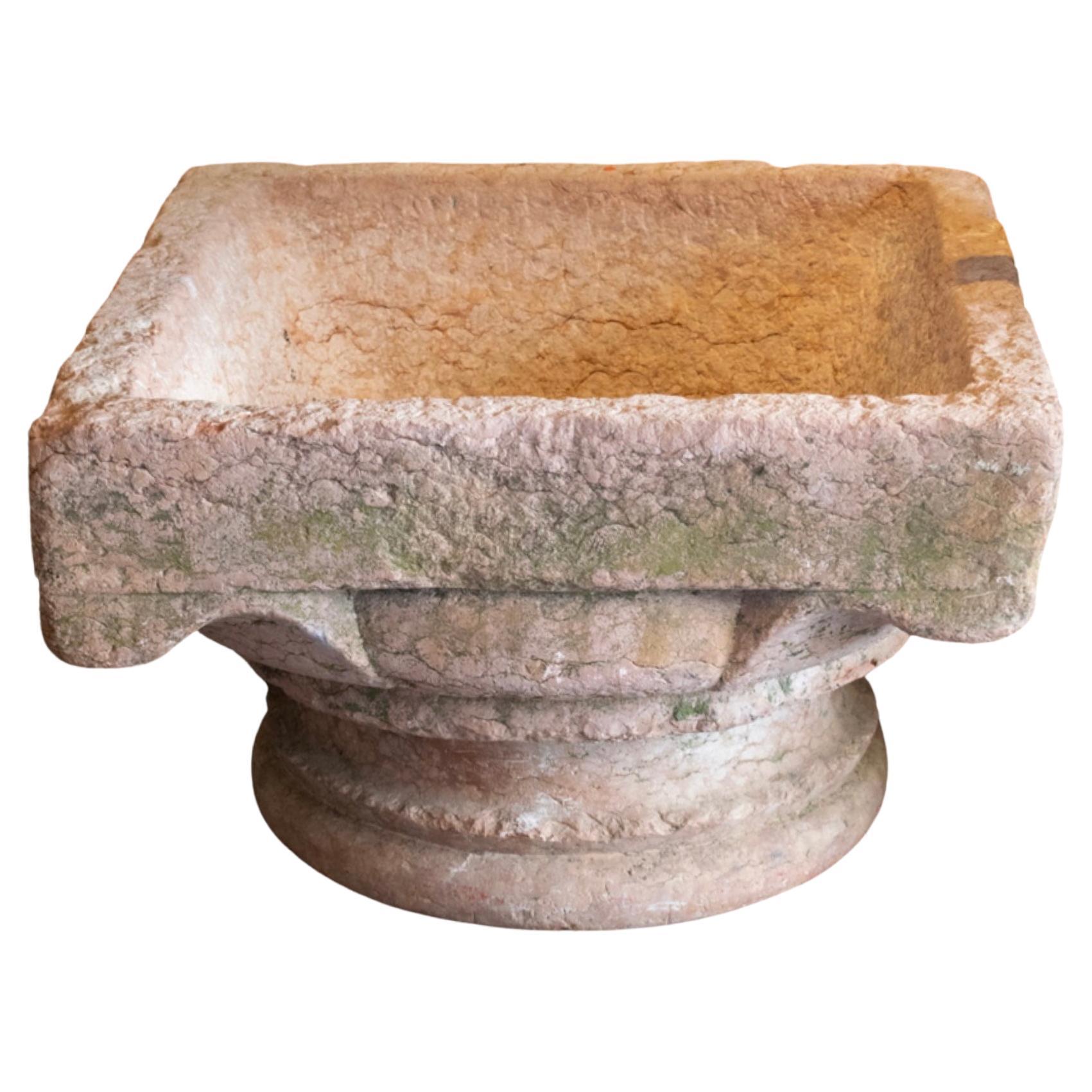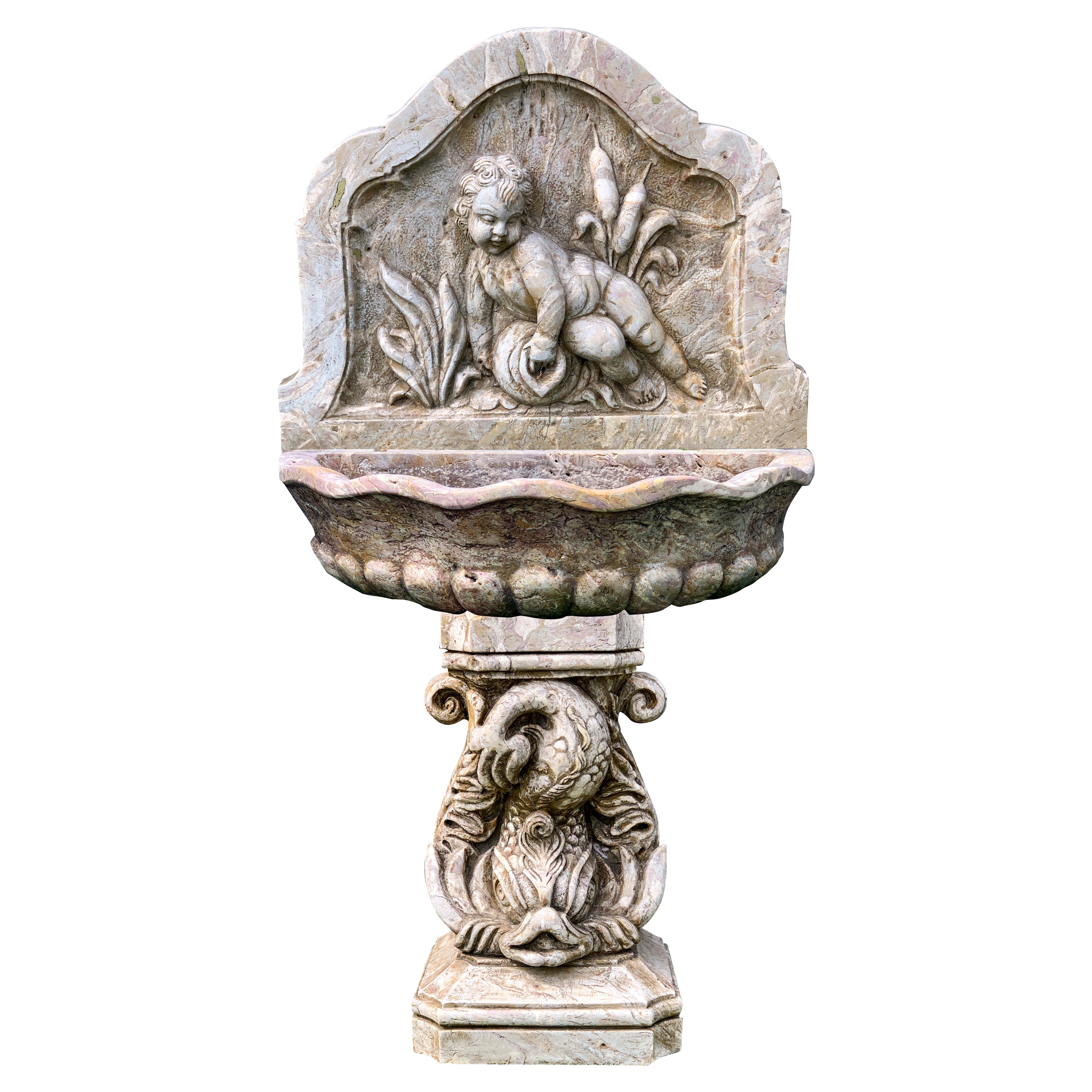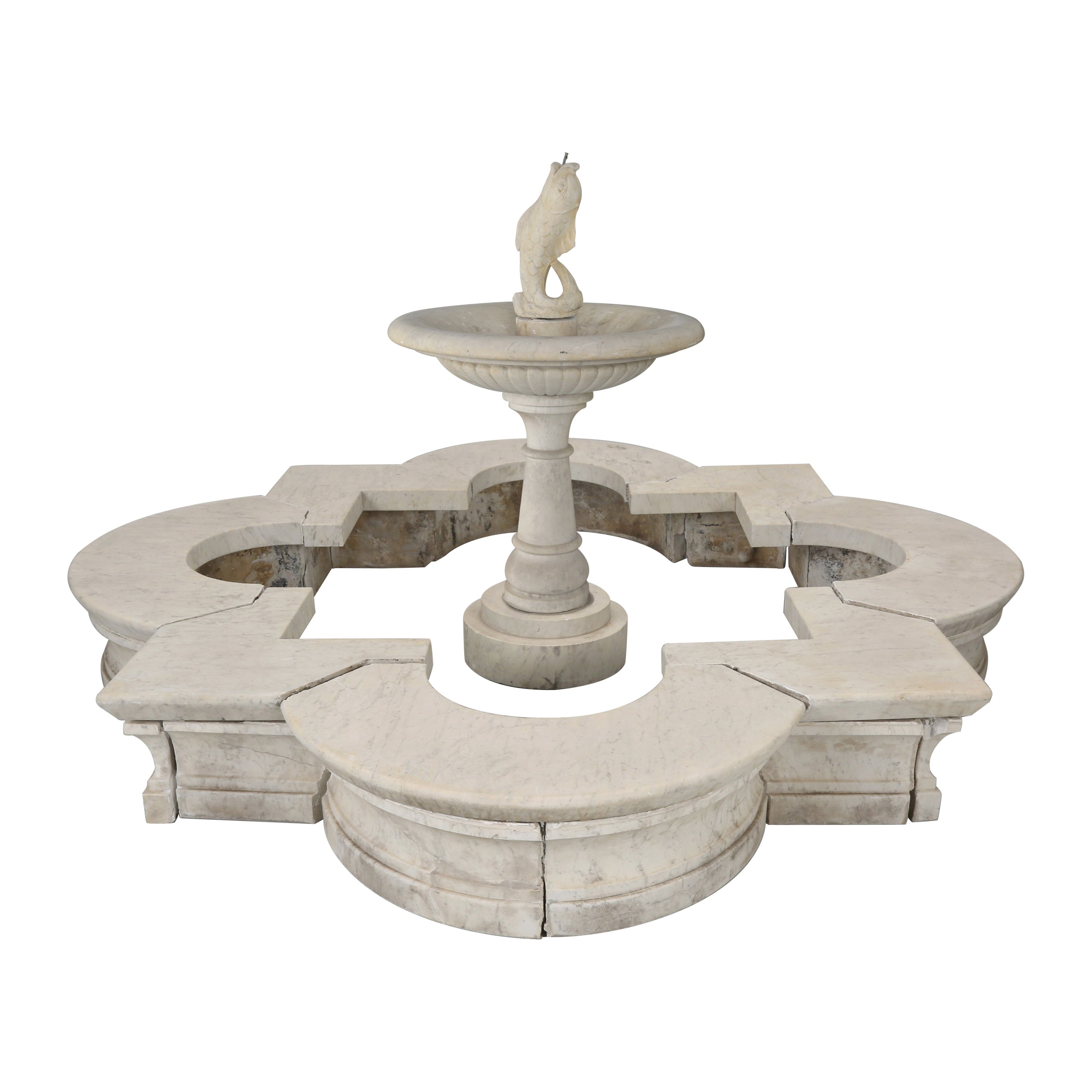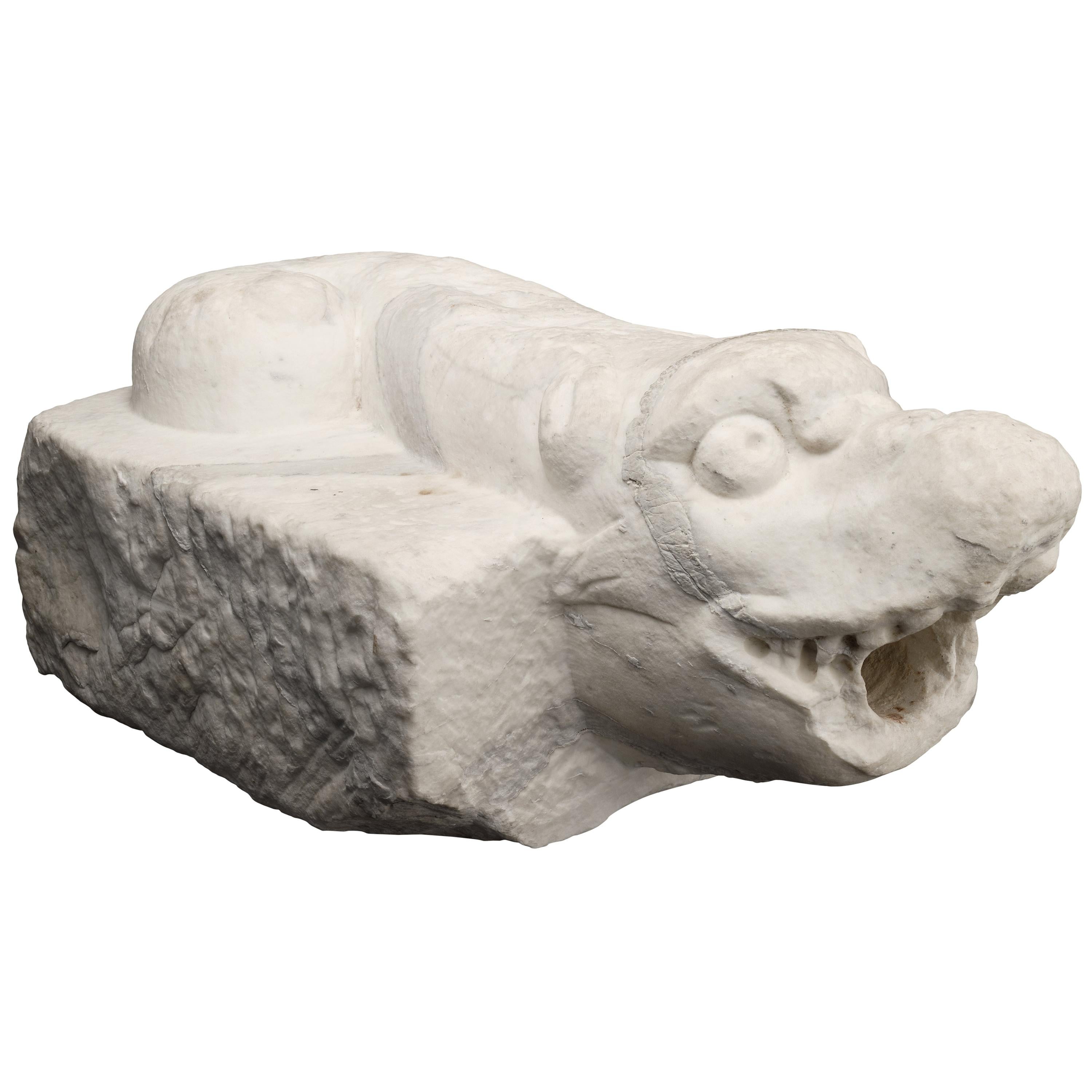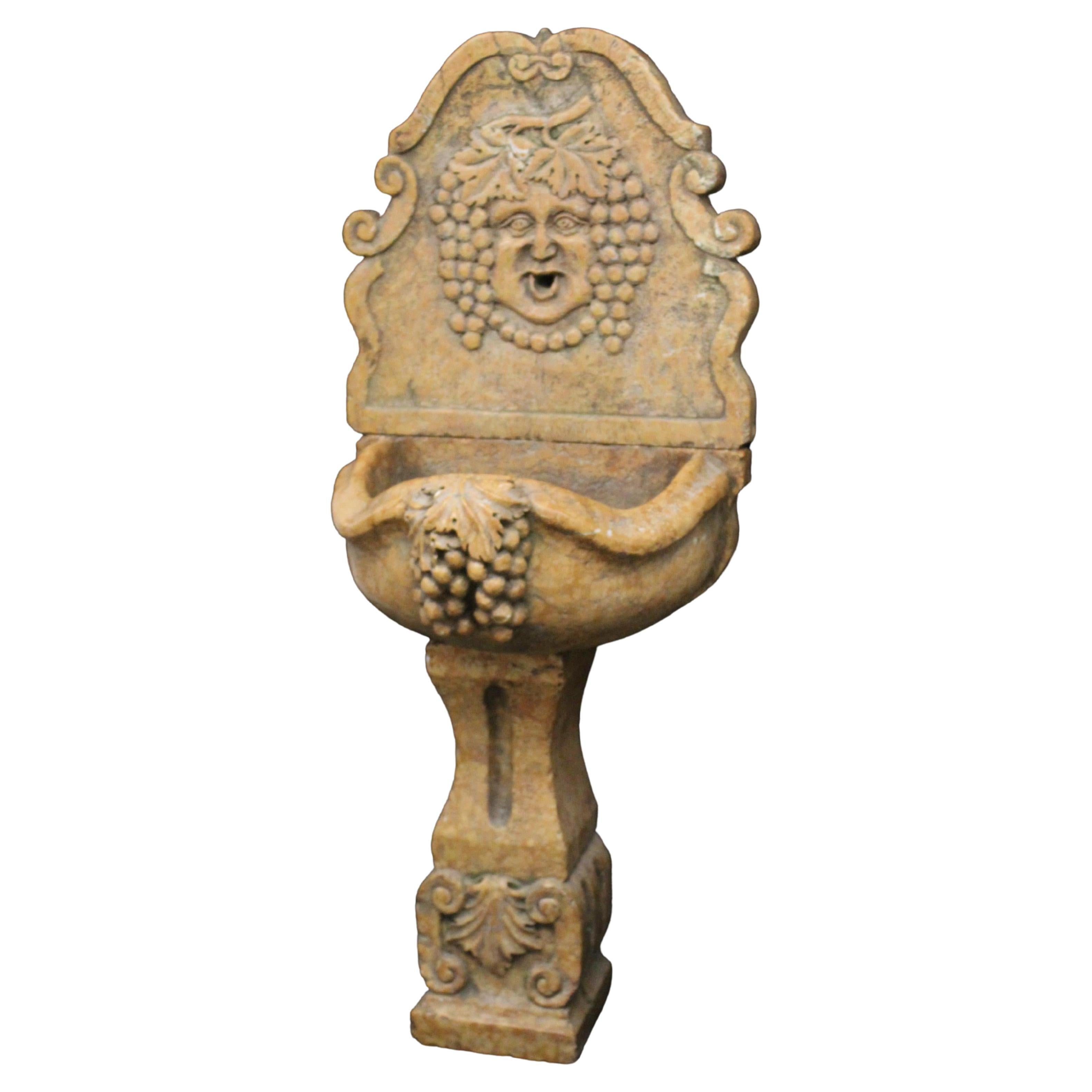Want more images or videos?
Request additional images or videos from the seller
1 of 7
Antique Italian Marble Fountain Fill
About the Item
Hand carved Italian marble fountain fill in the form of a Putto head. A wonderful architectural treasure. Can be used as originally intended or as a great ornament.
- Dimensions:Height: 9 in (22.86 cm)Width: 9 in (22.86 cm)Depth: 6 in (15.24 cm)
- Style:Renaissance (In the Style Of)
- Materials and Techniques:
- Place of Origin:
- Period:
- Date of Manufacture:19th Century
- Condition:
- Seller Location:West Palm Beach, FL
- Reference Number:
About the Seller
5.0
Platinum Seller
These expertly vetted sellers are 1stDibs' most experienced sellers and are rated highest by our customers.
1stDibs seller since 2004
943 sales on 1stDibs
Typical response time: 1 hour
- ShippingRetrieving quote...Ships From: West Palm Beach, FL
- Return PolicyA return for this item may be initiated within 3 days of delivery.
More From This SellerView All
- Vintage French Tole Chinoiserie LavaboLocated in West Palm Beach, FLVery decorative chinoiserie tole lavabo. Beautifully hand painted lavabo with a lush green background with brown and gold details. Top lid is finished with...Category
20th Century French Chinoiserie Fountains
MaterialsTôle
- Oval Silver Plate Lattice Basket Filled with Thirteen Italian Marble EggsLocated in West Palm Beach, FLOval woven silver plate basket filled with an assortment of multicolored Italian easter eggs.Category
20th Century Italian Decorative Baskets
MaterialsMarble, Silver Plate
- Italian Rococo Marble-Top Gilded ConsoleLocated in West Palm Beach, FLCarved and gilded Baroque style console with marble top.Category
20th Century Italian Rococo Console Tables
MaterialsGiltwood
- Antique Italian Rococo MirrorLocated in West Palm Beach, FLAntique Italian hand carved and gilded Rococo style wall mirror.Category
Antique 19th Century Italian Rococo Wall Mirrors
MaterialsGiltwood
- Italian Neoclassical Tripod Arrow Table with Marble TopLocated in West Palm Beach, FLItalian Neoclassical tripod arrow table with dark green marble top. Great little drinks table.Category
20th Century Italian Neoclassical Side Tables
MaterialsMarble, Iron
- Pair of Vintage Italian Brass & Marble Dolphin LampsLocated in West Palm Beach, FLPair of Vintage Brass and Marble Italian Dolphin lamps with dark green paper shades. Lamp shades have a 14" diameter with a height of 9.50".Category
20th Century Italian Table Lamps
MaterialsMarble, Brass
You May Also Like
- Italian Marble FountainLocated in Dallas, TXSquare shape marble fountain. Originates from Italy. Circa, 1820's.Category
Antique Mid-18th Century Fountains
MaterialsStone
- Italian Marble Garden FountainLocated in Essex, MAWith a arched back panel with cherub pouring water from an urn surrounded by cattails over a basin with shaped rim and gadrooned underside supported on a carved dolphin form support ...Category
Antique 1750s Italian Rococo Revival Fountains
MaterialsMarble
- Antique Italian Marble Fountain Quatrefoil Basin Carved Marble Fish Spout c 1920Located in Chicago, ILExquisite and rare Antique Italian Hand-Carved Marble Fountain with a Classic Quatrefoil Basin and Fish Spout, that was removed from a Chicago mansion. The quatrefoil design dates back to 850BC and means four leaves and is a symbol for good luck. We have been told by the previous owner that the home where the antique Italian marble fountain resided, was built in the early 1900’s and that seems to mesh well with our thoughts of the Antique Italian Marble Fountains age. Certainly, any Antique Italian Marble Fountain that’s been subjected to over 100-Chicago Winters...Category
Vintage 1910s Italian Country Fountains
MaterialsCarrara Marble
- Italian Ancient Marble Sculpture Fountain, Late 16th CenturyLocated in Milano, ITSea monster Carrara marble mouth fountain Italy, late 16th century It measures 13.8 x 31.5 x 18.9 in (35 x 80 x 48 cm) State of conservation: some small evident gaps and widespread signs of wear due to outdoor exposure. The gray marks crossing it do not come from restoration, but are rather the natural veins of the marble. This work has some morphological characteristics typically associated with the iconography of the sea monster: an elongated muzzle, sharp teeth, protruding eyes, elongated ears, and a coiled serpent's tail. An in-depth series of studies on artistic depictions of the sea monster attempted to verify how this symbol evolved in antiquity in the European and Mediterranean contexts and how it gradually changed its image and function over time. The iconography itself is mutable and imaginative and its history is rich with cultural and artistic exchange, as well as the overlapping of ideas. This occurred so much that it is difficult to accurately pinpoint the "types" that satisfactorily represent its various developments. However, we can try to summarize the main figures, starting from the biblical Leviathan and the marine creature that swallowed Jonah (in the Christian version, this figure was to become a whale or a "big fish", the “ketos mega”, translation of the Hebrew “dag gadol”). Other specimens ranged from the dragons mentioned in the Iliad (which were winged and had legs) to "ketos” (also from Greek mythology), the terrifying being from whose Latinized name (“cetus”) derives the word "cetacean". See J. Boardman, “Very Like a Whale” - Classical Sea Monsters, in Monsters and Demons in the Ancient and Medieval Worlds, in Papers presented in Honor of Edith Porada, Mainz am Rhein 1987, pp. 73-84). In Italy the monster underwent yet further variations: it can be found in Etruscan art on the front of some sarcophagi representing the companion of souls, while among the Romans we find the “Pistrice” (cited by Plinio in Naturalis Historia PLIN., Nat., II 9, 8 and by Virgilio in Eneide: VERG., Aen., III, 427), which appeared in the shape of a stylized hippocampus or a very large monstrous cetacean and evolved into a hideous being with a dragon's head and long webbed fins. During the Middle Ages, the sea monster was the object of new transformations: at this time, it is often winged, the head is stretched like a crocodile, the front legs are often very sharp fins - sometimes real paws - until the image merges with dragons, the typical figures of medieval visionary spirituality widely found throughout Europe (on this topic and much more, see: Baltrušaitis, J., Il Medioevo fantastico. Antichità ed esotismi nell’arte gotica, Gli Adelphi 1997). In Italy during the 15th and 16th centuries, the revival of classicism - representative of the humanistic and Renaissance periods - led to a different reading of these "creatures". Indeed, the sea monster was also to find widespread use as an isolated decorative motif, especially in numerous fountains and sculptures where dolphins or sea monsters were used as a characterizing element linked to water (on this theme see: Chet Van Duzer, Sea Monsters on Medieval and Renaissance Maps, London, The British library, 2013). From the morphological point of view, the "sea monsters" of this period are mostly depicted as hybrid figures, in which the body of a mythological or real being (a hippocampus, a sea snake, a dolphin), is joined to a head with a rather indistinct appearance. It was usually characterized by large upright ears, an elongated snout, sharp teeth and globular, protruding eyes; a complex and indefinite figure, both from the symbolic point of view and from that of its genesis. The work we are examining is placed as a cross between the medieval sea serpent and the Renaissance dolphin, with stylistic features which recall the snake as often used in heraldry (such as the "snake" depicted in the coat of arms of the Visconti - the lords and then dukes of Milan between 1277 and 1447 - and which, for some, may be derived from the representations of the “Pistrice” that swallowed Jonah). In the search for sources, Renaissance cartography and in particular woodcuts should not be neglected. See for example the monsters of Olaus Magnus, from the editions of the “Historia de gentibus septentrionalibus” (“History of the peoples of the north”) and the natural histories of Conrad Gesner, Ulisse...Category
Antique 16th Century Italian Renaissance Animal Sculptures
MaterialsCarrara Marble
- Tulio Lombardo Style Marble FountainLocated in New Orleans, LAThis marble fountain sculpture in the style of Tulio Lombardo embodies the glory of Renaissance sculpture. Reminiscent of classical portrait busts, a bearded man's face serves as the...Category
Antique 17th Century Italian Renaissance Fountains
MaterialsMarble
- Marble FountainLocated in Rome, ITAncient fountain in Verona red marble, 20th century.Category
20th Century Italian Fountains
MaterialsMarble
Recently Viewed
View AllMore Ways To Browse
Los Angeles Dealers
Basin Italy
Los Angeles Antique Dealer
Stone Garden Basin
Antique Water Fountains
Hand Carved Basin
Fountain Head
Carved Stone Basin
Wall Basin
Antique Bronze Fountain
Antique Bronze Fountains
Fountain Top
Large Garden Fountain
Large Antique Fountain
Antique Stone Fountains
Antique Fountain Piece
Midcentury Modern Fountain
Garden Antique Wall Fountain
